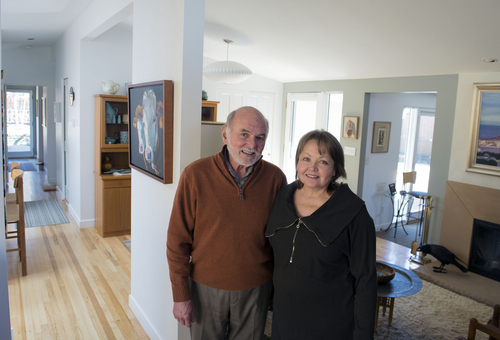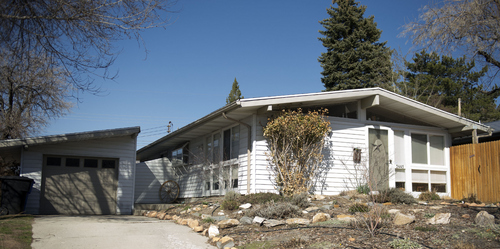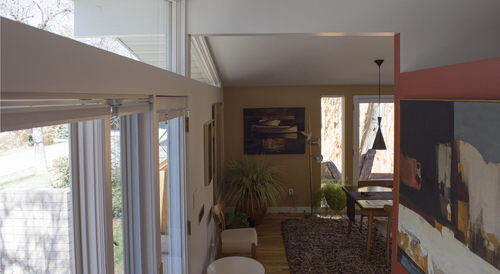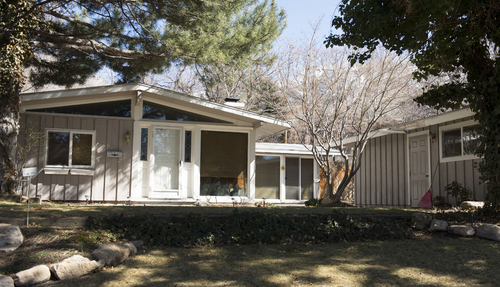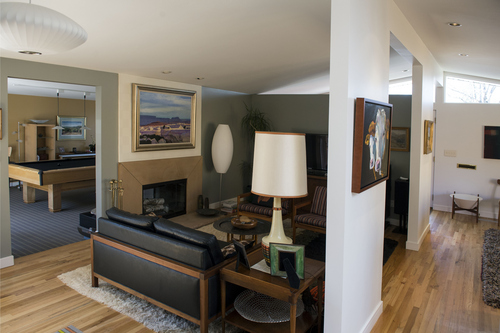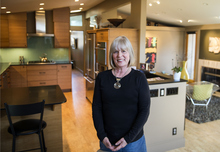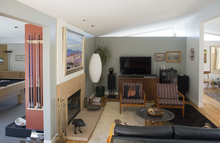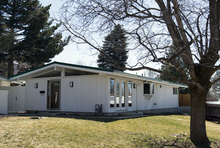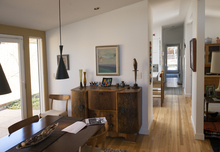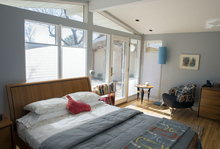This is an archived article that was published on sltrib.com in 2014, and information in the article may be outdated. It is provided only for personal research purposes and may not be reprinted.
Not all of Salt Lake County's historic buildings have ties to pioneer settlement.
A subdivision in lower Olympus Cove is seeking a spot on the National Register of Historic Places because 14 of its homes were designed by Cliff May, considered the "father of the California ranch house," a "dream home" affordable to the masses in the post-World War II housing boom.
The neighborhood's eligibility went up a notch last week when the Salt Lake County Council re-established a historic preservation ordinance for unincorporated areas.
The program fell by the wayside when the county changed from a commission to a council form of government in 2001, but it's back now, with the first six members of a reinstituted Historic Preservation Commission receiving council approval Tuesday.
"The unincorporated areas are part of that post-war boom period," said Kirk Huffaker, executive director of the Utah Heritage Foundation, a statewide historic-preservation group. "It's great for the county to re-establish its program and jump right into taking steps toward recognizing these postwar neighborhoods as important to the country and the people of Utah."
Cliff May began designing homes in Los Angeles and San Diego in the early 1930s. His buildings featured open interiors and plenty of windows, ideal for letting sunshine fill the dwelling and limiting the distinction between inside and outside. Stairs were rare, even going outside. Roofs were low-slung.
For several decades, May designed more than 1,000 custom homes for movie stars and wealthy clients. He also drew up the plans for Robert Mondavi's California winery.
But his portfolio also included more than 18,000 tract homes.
While considerably smaller than May's custom villas, they maintained his devotion to airiness and openness. In addition, May and business partner Chris Choate kept down costs by pre-fabricating house sections and windows so they could be assembled easily.
Olympus Cove was early in its development when May teamed up in 1954 or 1955 with a local builder on 14 homes directly east of Wasatch Boulevard, just north of what is now Churchill Junior High School.
The homes have no basements. They were relatively small — about 1,500 square feet. For the most part, garages were separated from the main L-shaped buildings, creating internal courtyards.
Missy Cannell and her late husband bought their home on Oakview Drive in 1964, knowing nothing about Cliff May.
"I loved the feel," said Cannell, owner of Cannella's restaurant in Salt Lake City. "I loved the windows and the indoor/outdoor thing. It felt so modern, compared to the bungalow I grew up in in Sugar House."
Similarly, Stephen and Jo Smith weren't aware that May had designed their Sunsetview Drive home when they bought it in 2009. "But I liked it for all the reasons he designed it like that," said Stephen, an architect who now speaks authoritatively about May based on extensive research.
"There's a door to the outside from every room in the house. It really feels like the outside is part of the house," Jo noted, her husband interjecting, "no matter where I am in the house, I can see the outdoor patios. As I move around, I'm constantly aware of that."
Several subdivision homes have been remodeled so much during the past 60 years that they scarcely resemble their origins. But most still bear telltale signs of May's hand.
Cannell and the Smiths are quite pleased, in fact, that a growing neighborhood understanding of the subdivision's architectural roots apparently influenced one homeowner remodeling a Cliff May home to expand upon the initial design.
The reintroduction of the unincorporated county's historic-preservation ordinance could make remodeling jobs like that eligible for tax benefits or grant money, provided certain construction and architectural standards are met, said Patrick Leary, county townships executive director.
"People often come to me because they think the houses look cool," he said. "But the real benefit is when you move in. It has a positive effect on lifestyle. You spend a lot more time outside and invite people in more often. It's remarkable how many people you can have over for a party and be comfortable with — in that size of house."
The Smiths and Cannell can attest to that.
They were planning a party last summer to celebrate being part of a Cliff May subdivision when, lo and behold, whom did they run into as she checked out his homes in the neighborhood — Cliff May's daughter, Hillary May Jessup.
So Jessup and her daughter Jennifer, a Park City resident, attended the bash that gave rise to a new neighborhood nickname: "Cliffdwellers in the Mayborhood."
Twitter: @sltrib.com —
Nominees
The first six members of a resurrected Historic Preservation Commission for unincorporated Salt Lake County were confirmed Tuesday by the Salt Lake County Council. Tuesday are:
• Angie Abram, historic architect (Millcreek Township)
• Kathleen Bailey, town council (Copperton Township)
• David Brems, architect (Emigration Township)
• Pamela Todd, historian (Kearns Township)
• Drew Weaver, historian (Granite community)
• Cynthia Whitehair, businesswoman (Magna Township)



